A
arcticsun
heheh no offense taken lmt the language comes from the fisherman culture, its quite expressive idd
Here are some pictures from some random sites along my way, i didnt find time for any sight seeing really, i just had to stop and snap a pic once in a while from the car mostly. And when i wasnt driving efficiently i was stuck without a car. I did go for a mountain hike when the car broke down the first time, when the waterpump failed.
This happened in a place called "Gudvang" on the west coast of Norway about 4 hours from Bergen.. vang means meeting place and Gud is .. well God.. So the car broke down on the meeting place of the Gods I learned from the locals while i was there that it was a hotspot for viking activity back in the day. The area is known as "Aurland" which means "troutland" directly translated to English. There are several high class trout rivers in the area. Unfortunately the season hadnt started for the seatrout in the rivers in this region yet so I was left to enjoying the scenery.
I learned from the locals while i was there that it was a hotspot for viking activity back in the day. The area is known as "Aurland" which means "troutland" directly translated to English. There are several high class trout rivers in the area. Unfortunately the season hadnt started for the seatrout in the rivers in this region yet so I was left to enjoying the scenery.
I was there for 2 days, spent one night at a fishing camp by the aurland river.. the troutland river if you will Here are some pictures from Aurland (troutland).
Here are some pictures from Aurland (troutland).
My accomodations the first day, i had the hut at the far left of the pic. It was 45 Euros, shared bathroom/shower with the other huts, room for 4, two bunkbeds. Hotplate, Tv with one channel, the communist Norwegian, DDR-like, govt propaganda mashine known as NRK which belches reruns of old drama shows from the 80s at the viewers along with politically "rounded" debate programs and evening shows that seemingly has no theme and no informational value whatsoever...
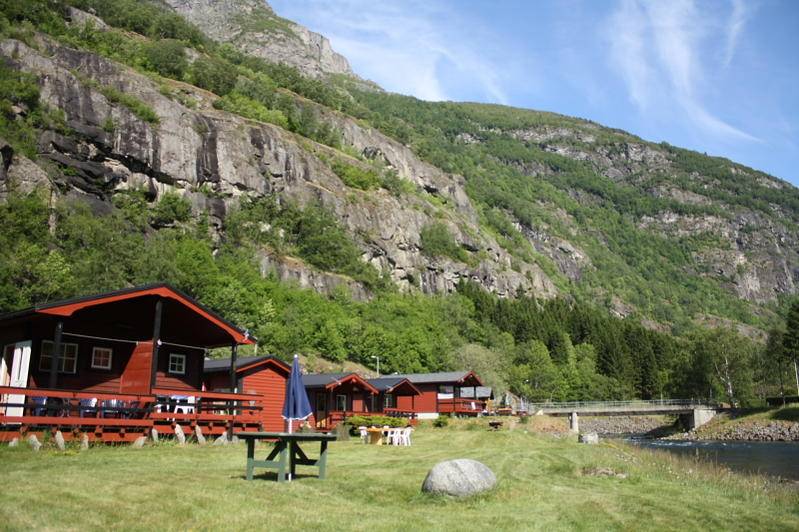
Whats on the one channel you may ask? Naturally its "Derrick".. German crime show from the 80s starring Horst Tappert as Derrick with sidekick Harry Klein. This show has been run on the govt channel more then the daily news tbfh. Fucking Derrick.. lmao.. anyway thats what was on the TV
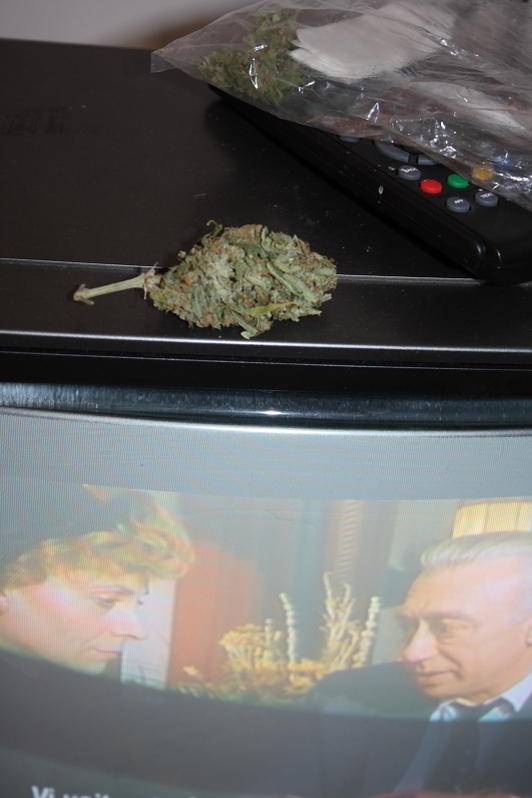
Fuck TV anyway, i blazed up a couple of fatties .. i was sorry that the river hadnt opened. Decided to go for a hike up the mountainside along the waterfall that was overhead. Every valley in Norway has one or more of these waterfalls, its just a random one Was a nice nature trail to the top, the mountainsides was thick with vegetation, wild flowers and berries all along the trail.
Was a nice nature trail to the top, the mountainsides was thick with vegetation, wild flowers and berries all along the trail.
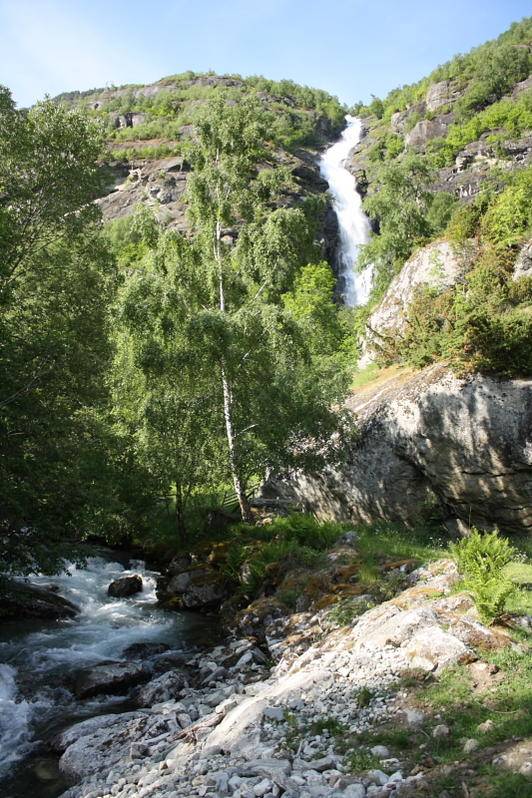
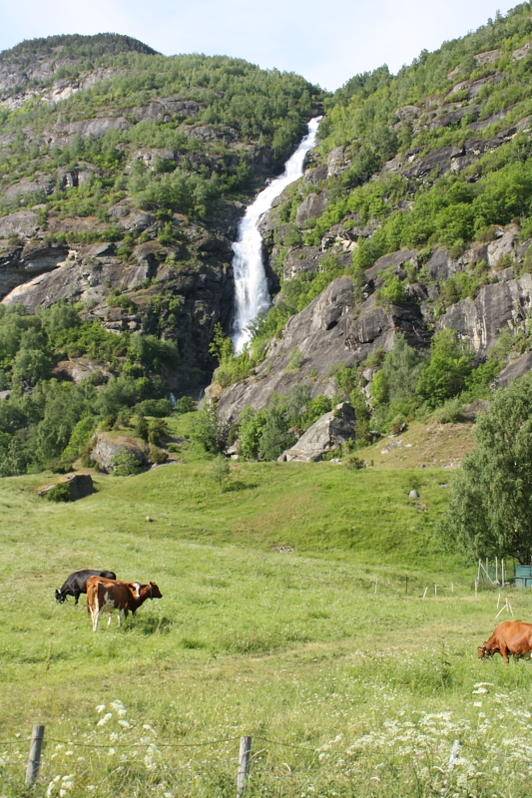
Moving up the trail there were different viewpoints where i could look out towards the fjord and the river below, it was hard to capture the perspective of the whole scenery in a 2D picture frame. First viewpoint was some rock boulders that stuck out from the vegetation, im abit too scared of heights to go all the way out on the tip of the rock to take a picture of the drop below, but it was about a 150 to 200 meter drop i reccon. Here is looking down the valley towards the fjord.
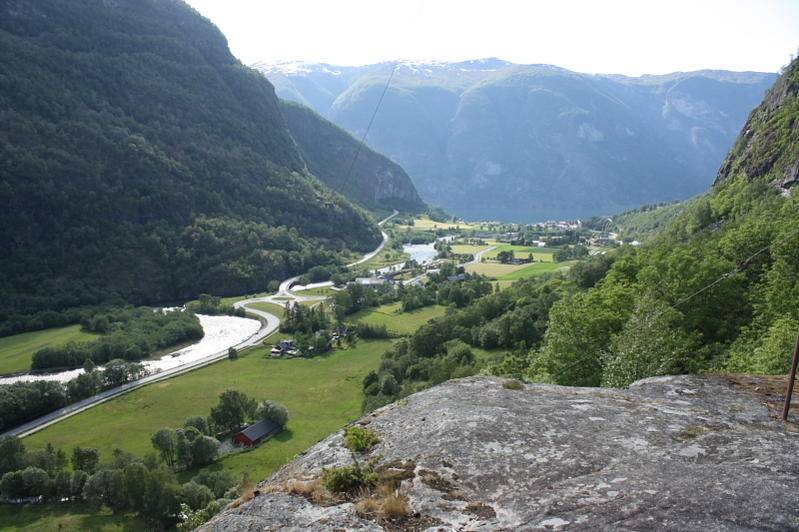
Here im alittle higher still and looking up the Aurland valley.
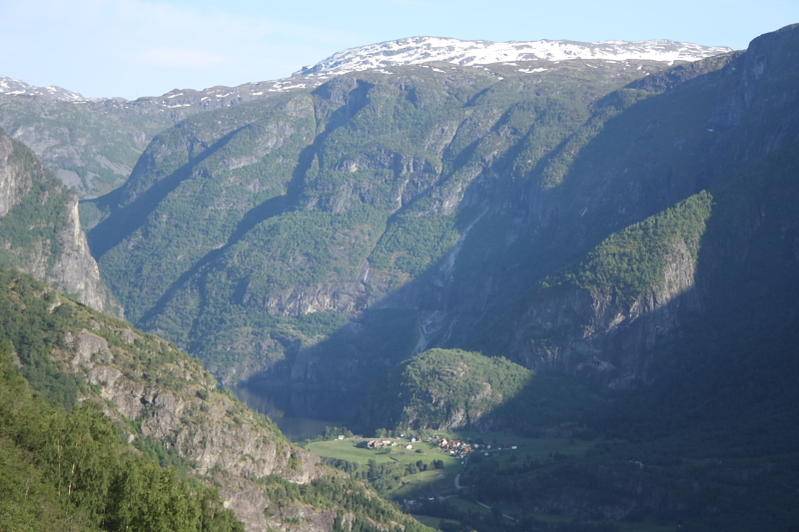
It was hot that day, and the trail was very steep. Hidden in the vegetation on my way up was smaller rivers and waterfalls trickling down the mountainside. I got very sweaty and hot on the way up, halfway up i found this waterfall where i took a nature shower. It was fantastic, the water was cool but not too cold. Real delightful experience..
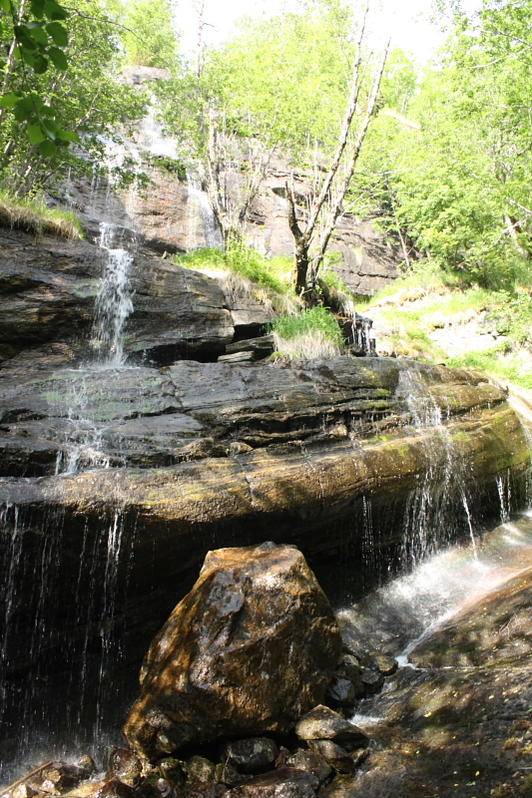
Even further up the mountain I got to the grazelands of sheep, these are rapidly deteriorating these days due to the communist style centration farming politics run by the fully red govt. These days small farms are shut down in favor of massive industrial scale facilities. This old culture landscape with old grazelands and shepherds huts high up in the mountainsides is rapidly getting overgrown. In the old days, especially in the viking days there would have been plenty of hemp grown hereabouts.
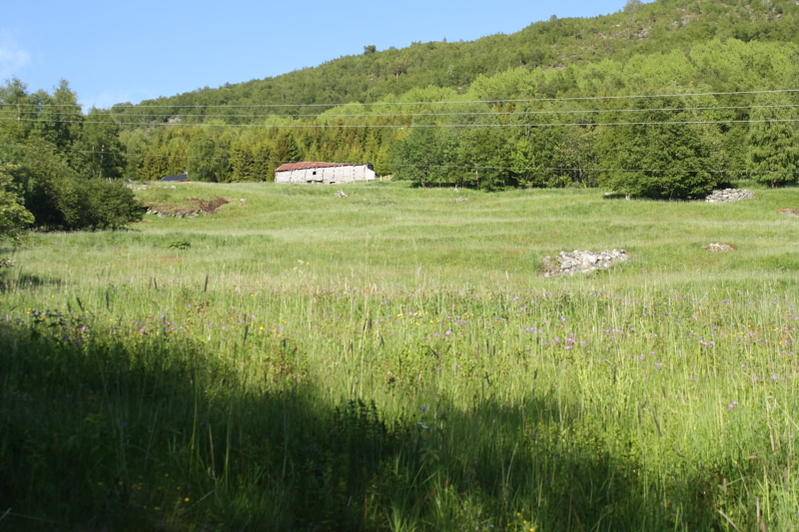
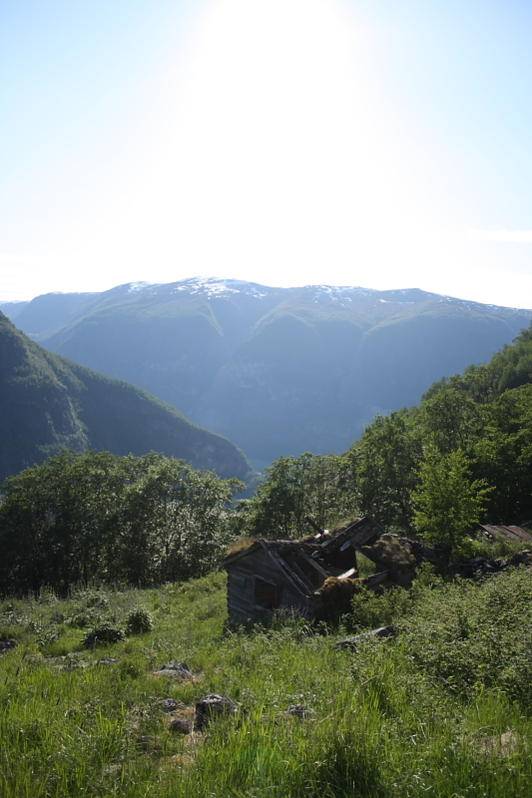
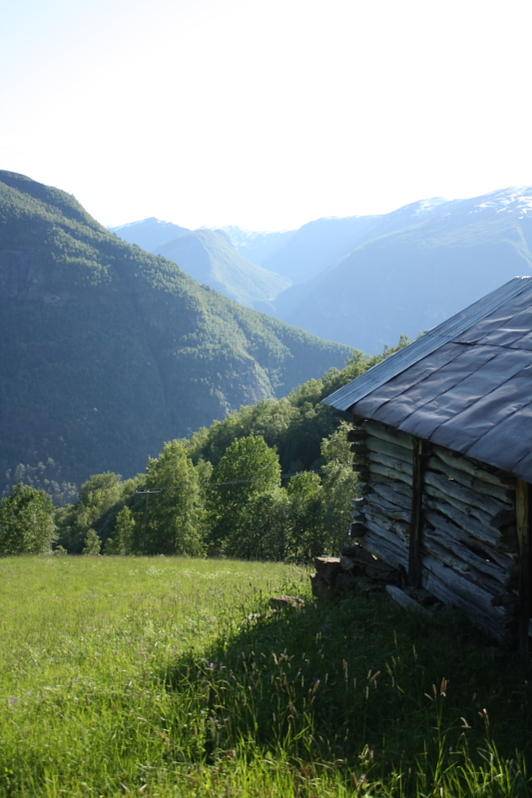
This is where i turned, this was at the top of the waterfalls. I had left the trail to go see if i could find a viewpoint but the vegetation was to tight and the slope was too steep. Kind of dangerous. There were still more meadows further up the mountain. This one was still in use with sheep grazing, i think the elevation could have been between 600 and 800 meters from where i turned, the vegetation was just starting to become alittle less dense. But it was still below the treeline. That meadow and shepherds hut overhead must have been another 100 meters higher i guess.. its very steep, it does not really show in the pictures how steep these mountainsides are, they are almost vertical with many cliffdrops of several hundred meters as one moves up. From where this pic is taken there was a steep drop below, ca a 75-80 degree drop of 50 meters maybe down into the top of the waterfalls, the slope was very slippery and i was holding on to trees to avoid sliding down the hill into the river. The vegetation was too dense to get a proper picture showing the top of the waterfalls and the valley below. The picture is taken lookin up the mountainside at approx 600 to 800 meters elevation.
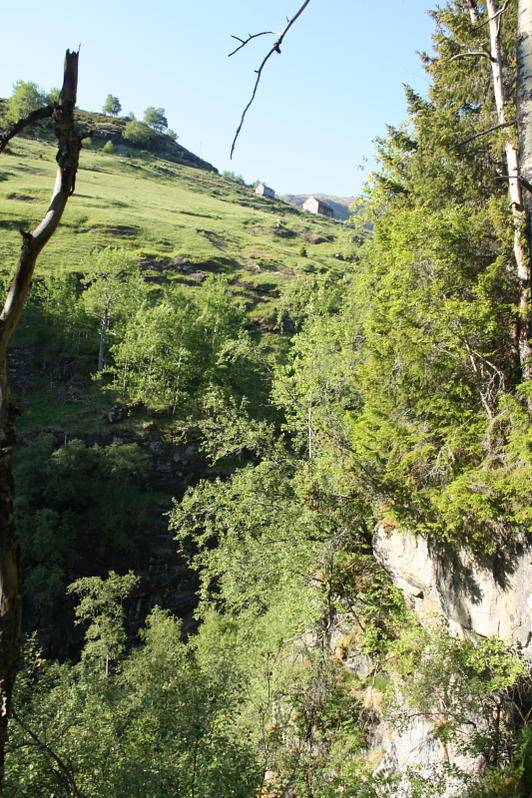
..meh.. the pictures did not do the scenery any justice tbh..
Anyway, the next day i decided to pitch the tent by the fjord close to the carshop. Here is the view from my tent..
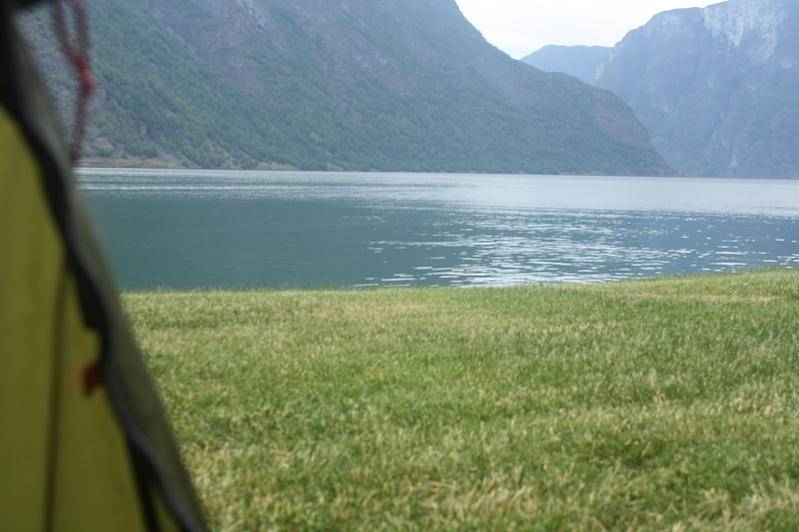
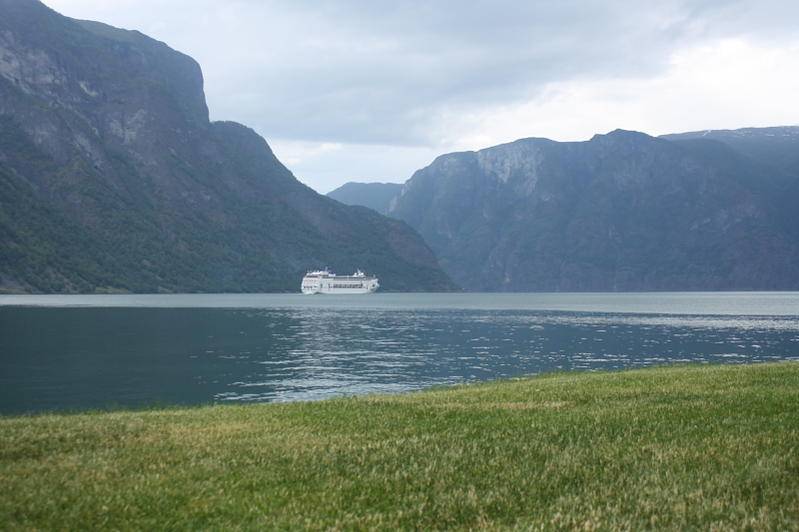
the town.. Aurland.. not a big place as you see, the local cafe served good food at a good price.
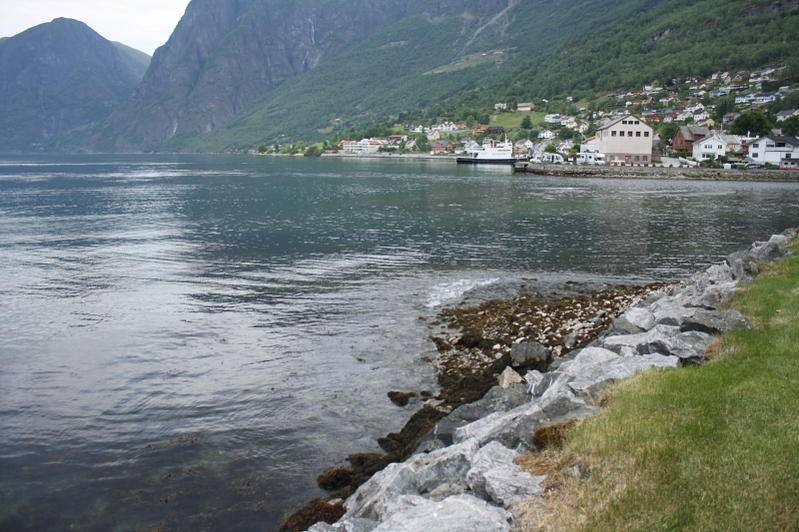
I had company by this seal which was hunting for fish by the mouth of the Aurland river just outside my tent, i had a nice relaxing time watching the seal and smoking some doobs that night.. Damn hard to capture a sea animal on camera btw, sorry if you cant see properly, but its a type of seal known as a "kobbe" in the local tongue. Its not technically a seal i guess.
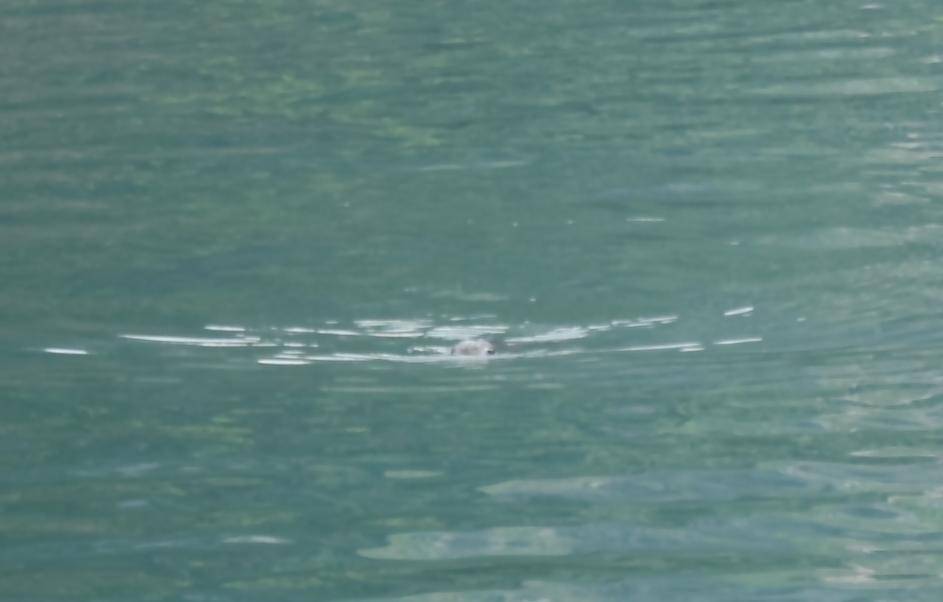
The food was good and affordable at the local cafe as i mentioned. The "creamy Norwegian fish soup"
 is famously the best fish soup in the world.. The cafe was on a nice spot by the Aurland river outlet. You can see the autoshop on the other side of the river, its the big white building, i pitched my tent on the molo on that side of the river behind that building on a grass field.
is famously the best fish soup in the world.. The cafe was on a nice spot by the Aurland river outlet. You can see the autoshop on the other side of the river, its the big white building, i pitched my tent on the molo on that side of the river behind that building on a grass field.
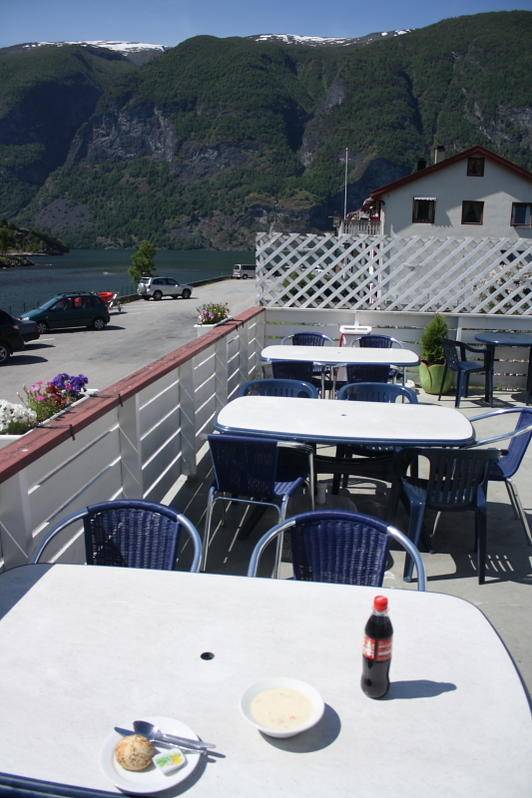
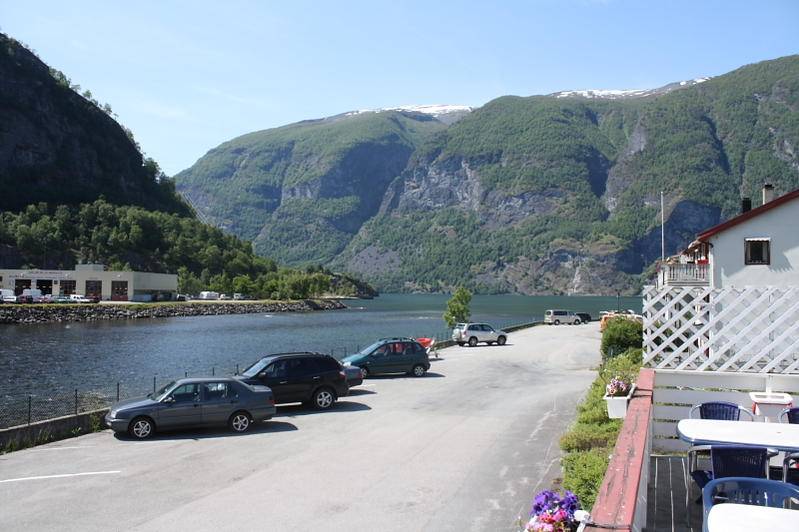
Here are some pictures from some random sites along my way, i didnt find time for any sight seeing really, i just had to stop and snap a pic once in a while from the car mostly. And when i wasnt driving efficiently i was stuck without a car. I did go for a mountain hike when the car broke down the first time, when the waterpump failed.
This happened in a place called "Gudvang" on the west coast of Norway about 4 hours from Bergen.. vang means meeting place and Gud is .. well God.. So the car broke down on the meeting place of the Gods
I was there for 2 days, spent one night at a fishing camp by the aurland river.. the troutland river if you will
My accomodations the first day, i had the hut at the far left of the pic. It was 45 Euros, shared bathroom/shower with the other huts, room for 4, two bunkbeds. Hotplate, Tv with one channel, the communist Norwegian, DDR-like, govt propaganda mashine known as NRK which belches reruns of old drama shows from the 80s at the viewers along with politically "rounded" debate programs and evening shows that seemingly has no theme and no informational value whatsoever...
Whats on the one channel you may ask? Naturally its "Derrick".. German crime show from the 80s starring Horst Tappert as Derrick with sidekick Harry Klein. This show has been run on the govt channel more then the daily news tbfh. Fucking Derrick.. lmao.. anyway thats what was on the TV
Fuck TV anyway, i blazed up a couple of fatties .. i was sorry that the river hadnt opened. Decided to go for a hike up the mountainside along the waterfall that was overhead. Every valley in Norway has one or more of these waterfalls, its just a random one
Moving up the trail there were different viewpoints where i could look out towards the fjord and the river below, it was hard to capture the perspective of the whole scenery in a 2D picture frame. First viewpoint was some rock boulders that stuck out from the vegetation, im abit too scared of heights to go all the way out on the tip of the rock to take a picture of the drop below, but it was about a 150 to 200 meter drop i reccon. Here is looking down the valley towards the fjord.
Here im alittle higher still and looking up the Aurland valley.
It was hot that day, and the trail was very steep. Hidden in the vegetation on my way up was smaller rivers and waterfalls trickling down the mountainside. I got very sweaty and hot on the way up, halfway up i found this waterfall where i took a nature shower. It was fantastic, the water was cool but not too cold. Real delightful experience..
Even further up the mountain I got to the grazelands of sheep, these are rapidly deteriorating these days due to the communist style centration farming politics run by the fully red govt. These days small farms are shut down in favor of massive industrial scale facilities. This old culture landscape with old grazelands and shepherds huts high up in the mountainsides is rapidly getting overgrown. In the old days, especially in the viking days there would have been plenty of hemp grown hereabouts.
This is where i turned, this was at the top of the waterfalls. I had left the trail to go see if i could find a viewpoint but the vegetation was to tight and the slope was too steep. Kind of dangerous. There were still more meadows further up the mountain. This one was still in use with sheep grazing, i think the elevation could have been between 600 and 800 meters from where i turned, the vegetation was just starting to become alittle less dense. But it was still below the treeline. That meadow and shepherds hut overhead must have been another 100 meters higher i guess.. its very steep, it does not really show in the pictures how steep these mountainsides are, they are almost vertical with many cliffdrops of several hundred meters as one moves up. From where this pic is taken there was a steep drop below, ca a 75-80 degree drop of 50 meters maybe down into the top of the waterfalls, the slope was very slippery and i was holding on to trees to avoid sliding down the hill into the river. The vegetation was too dense to get a proper picture showing the top of the waterfalls and the valley below. The picture is taken lookin up the mountainside at approx 600 to 800 meters elevation.
..meh.. the pictures did not do the scenery any justice tbh..
Anyway, the next day i decided to pitch the tent by the fjord close to the carshop. Here is the view from my tent..
the town.. Aurland.. not a big place as you see, the local cafe served good food at a good price.
I had company by this seal which was hunting for fish by the mouth of the Aurland river just outside my tent, i had a nice relaxing time watching the seal and smoking some doobs that night.. Damn hard to capture a sea animal on camera btw, sorry if you cant see properly, but its a type of seal known as a "kobbe" in the local tongue. Its not technically a seal i guess.
The food was good and affordable at the local cafe as i mentioned. The "creamy Norwegian fish soup"
Last edited:

 Enter north norway, finally.. after a week stuck in the south.
Enter north norway, finally.. after a week stuck in the south. Thank you for travelling with us
Thank you for travelling with us  you should come see some day, its a friendly type of place to visit. We dont like to hurry around here much, so we will always be here, its older then dust this place
you should come see some day, its a friendly type of place to visit. We dont like to hurry around here much, so we will always be here, its older then dust this place 


